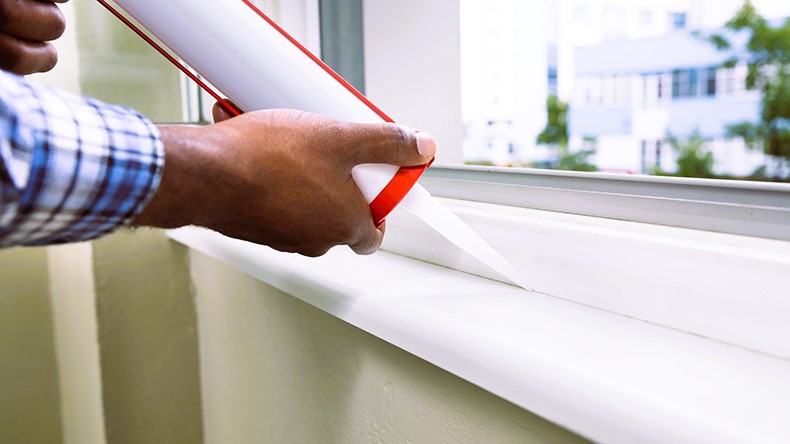Effective insulation is essential for maintaining a comfortable and energy-efficient home environment. When it comes to windows, proper sealing and weatherstripping play a crucial role in enhancing thermal insulation and reducing energy loss. In this article, we will explore the importance of window sealants and weatherstripping, their benefits, and how they contribute to improved energy efficiency. Understanding these concepts can help homeowners in Calgary make informed decisions when it comes to maximizing the thermal performance of their windows.
The Significance of Window Sealants
Window sealants are materials used to create an airtight and watertight seal between the window frame and the surrounding wall. They help prevent air infiltration and the exchange of heat between the interior and exterior of the home. Properly installed window sealants contribute to improved energy efficiency, reduced drafts, and increased comfort.
Benefits of Window Sealants

- Enhanced Energy Efficiency: By sealing gaps and cracks around windows, sealants prevent air leakage, which can account for a significant amount of energy loss. An airtight seal helps maintain a more stable indoor temperature, reducing the need for excessive heating or cooling and resulting in energy savings.
- Draft Reduction: Window sealants help minimize drafts, eliminating cold spots near windows and creating a more comfortable living environment. They prevent the infiltration of cold air in winter and hot air in summer, improving thermal comfort throughout the year.
- Moisture and Water Intrusion Prevention: Properly applied sealants act as a barrier against moisture and water intrusion, preventing potential damage to window frames, walls, and surrounding areas. They help maintain the integrity and longevity of the windows and the overall structural integrity of the home.
Weatherstripping: Enhancing Window Insulation
Weatherstripping refers to materials applied to the movable parts of windows, such as sashes and casements, to create a tight seal when closed. It helps minimize air leakage, enhances insulation, and improves the overall energy efficiency of windows. Weatherstripping materials can include adhesive-backed foam tape, V-strip, door sweeps, or silicone bulb gaskets, among others. Condensation on the windows in this article, we have analyzed: causes, consequences and solutions.
Benefits of Weatherstripping
- Improved Insulation: Weatherstripping fills gaps and spaces between the movable parts of windows, reducing air infiltration and heat transfer. This helps to create a more thermally efficient window system, minimizing energy loss and reducing heating and cooling costs.
- Enhanced Comfort: By sealing gaps and cracks, weatherstripping reduces drafts and cold spots near windows, improving overall thermal comfort in the home. It helps maintain a consistent indoor temperature and reduces the need for temperature adjustments.
- Noise Reduction: Weatherstripping can also contribute to noise reduction by sealing gaps through which sound can penetrate. It creates a barrier that helps block outside noise, promoting a quieter and more peaceful indoor environment.
- Choosing the Right Sealants and Weatherstripping Materials
When selecting sealants and weatherstripping materials, it is important to consider factors such as durability, flexibility, and compatibility with the window materials. Adhesive-backed foam tapes, for example, are easy to apply and can conform to irregular surfaces, providing a reliable seal. V-strips and door sweeps are commonly used for sliding windows and doors, offering effective weatherproofing.
To learn more about window insulation standards and regulations in Canada, you can refer to the official website of the Government of Canada on energy efficiency: Canada.ca.
Proper Installation and Maintenance

Proper installation and regular maintenance are essential to ensure the effectiveness of sealants and weatherstripping. Ensure that surfaces are clean and dry before applying sealants. Follow manufacturer guidelines for application techniques and drying times. Regularly inspect sealants and weatherstrippingfor signs of wear or damage, and replace them as needed to maintain their effectiveness.
Additional Tips for Enhanced Window Insulation
- Inspect and repair window frames: Check window frames for any cracks, gaps, or deteriorated areas. Repair or replace damaged frames to improve overall insulation.
- Consider energy-efficient windows: If your windows are old or in poor condition, upgrading to energy-efficient windows can provide significant improvements in insulation and energy savings. Look for windows with low U-factor and high R-value to ensure optimal thermal performance.
- Utilize window coverings: Use window coverings such as blinds, curtains, or window films to provide an additional layer of insulation. These coverings can help reduce heat transfer and maintain a more comfortable indoor temperature.
- Professional assistance: If you’re unsure about the proper installation of sealants or weatherstripping, or if you have specific concerns about your window insulation, consult a professional contractor or installer. They can provide guidance and ensure that the installation is done correctly.
In conclusion, window sealants and weatherstripping play a vital role in enhancing thermal insulation, reducing energy loss, and improving overall energy efficiency. Properly applied sealants create an airtight seal, preventing air infiltration and moisture intrusion. Weatherstripping materials help to seal gaps and reduce drafts, enhancing the insulation of movable parts. By choosing the right materials, ensuring proper installation, and performing regular maintenance, homeowners in Calgary can optimize the thermal performance of their windows and enjoy improved energy efficiency and comfort.
